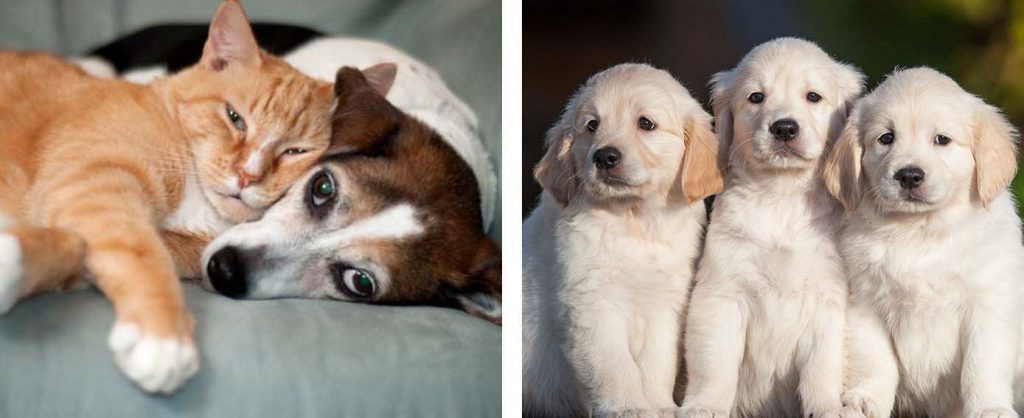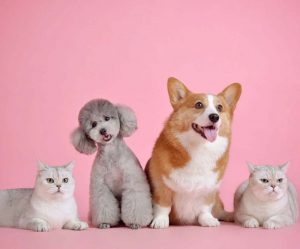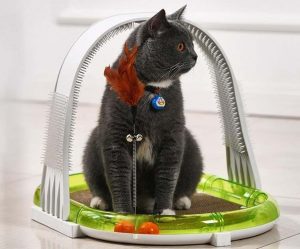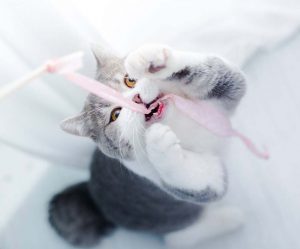The significance of grooming
Grooming cats and dogs is a daily necessity in pet stores and pet hospitals, just as important as feeding them or shoveling their feces every day. Pets shed their fur from time to time. At the peak of the hair change, they were shedding thousands of hairs a day. In particular, the fluffy hair of cats and dogs is light and easy to float in the air or cling to knitwear, directly reducing indoor air quality and hygiene.
Proper grooming procedures can not only bring the pet and owner closer together, but also check the health of the pet’s skin through daily grooming. Some early dermatological symptoms can be detected, prevented and treated early. Cats, in particular, lick their own hair to clean themselves, so it’s easy to swallow lost hair into their bodies, which can lead to hairballs in severe cases.
Grooming methods for short-haired cats and dogs
- Start at the back and work your way up from your neck to your hips in the direction of hair growth. If you are concerned about static electricity, spray your pet with an even spray of anti-static spray to reduce static electricity. Take the comb and comb it gently. Pushing too hard not only makes them uncomfortable, but can also cause skin damage.
- Comb from cheeks to neck. In addition, the jaw is prone to acne or food residue, you can also use a comb comb. When brushing your hair, comb it from the top of your head to your neck. Also, some pets wriggle when grooming, so take extra care to avoid damaging their eyes.
- Comb your hair from your chest to your belly. The belly is a sensitive area, so comb the wool gently and quickly. Gently pick up their front feet and brush the hair on their abdomen from under their armpits.
Grooming methods for long-haired cats and dogs
- Carefully comb the hair around your head and face, from your cheeks to your neck. Because cheek hair near the ear is prone to tangles, take special care to comb out the tangles to avoid skin irritation. Brush the hair at the back of your neck in the direction of hair growth. Most pets like to groom their backs, but some cats and dogs are more sensitive when grooming their buttocks, so pay more attention when grooming.
- To comb your chin, hold your chin with one hand and comb from your chin to your chest. Long-haired cats and dogs are easy to be touched when eating or drinking because of their long hair, resulting in knots; When something sticks, you can first wet it with a towel, wipe off the dirt, and brush the tangled hair. To comb the front foot, gently lift the front foot with one hand and comb it with the elbow toward the foot. (Lift the front foot to make it easier to groom quickly.)
- Use a comb to comb your armpits. Comb from underarm to chest.
remind
- You must let your pet relax before grooming. It’s best to groom them when they’re in a good mood, not when they’re playing. Because they are in a good mood, they will mistake you for playing with them, and it will be harder to groom. Also, don’t force your hair to be unhappy, or it will be difficult to do later.
- Pets that hate grooming are likely to resist the action because their previous experience makes them uncomfortable. It is recommended to choose a suitable comb for them so that they can get used to the action of combing.
When it comes to hair care for long-haired cats and dogs, owners need to be patient. The Golden retriever, the Samoyed, the Persian, the puppet, the Angela, the Maine Coon, etc., are loved for their long silky coats, but sometimes that love can turn into trouble. Knots and static electricity are the most likely problems caused by improper hair care in long-haired cats and dogs. Tangles are several times more common than in short-haired pets. Hair care for long-haired cats and dogs is much more complicated than for short-haired cats and dogs. The owner needs to master more nursing knowledge from a professional point of view, in order to perfectly reflect their own beauty.





